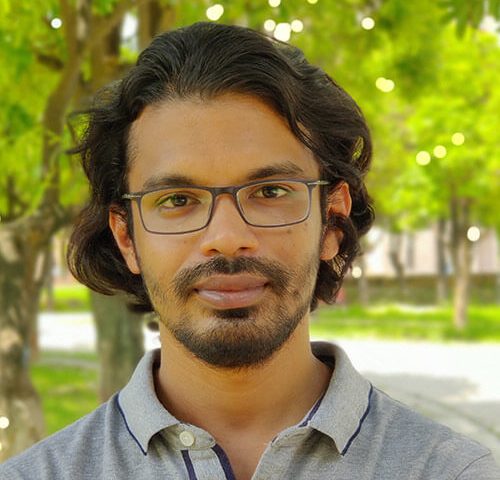Abdul Momin
Abdul Momin
Virtual Intern
Abdul Momin is a Senior Research Fellow at Indian Institute of Information Technology Allahabad. Before that, he has worked under the “Development of Robust Document Image Understanding System for documents in Indian Scripts (Government of India funded)” project as project scientist for more than 4 years.
Currently, he is submitting his thesis on “A study into Human Mind – Attention and Creativity”. In his thesis, he investigated how different factors (such as – mental stress and problem-solving strategies) could affect attention and creativity. He further investigated if there is any relationship between attention and creativity. He used physiological signals, brain signals and eye-tracking for his studies.
He is particularly interested in investigating the factors which influence human learning, intelligence and creativity. His interest also includes Machine Learning and Intelligent System, affective computing, computational modelling of higher cognitive functions, Signal Processing, Brain-Computer Interface.
Publications
-

Connecting the Brains via Virtual Eyes: Eye-Gaze Directions and Inter-brain Synchrony in VR
Ihshan Gumilar, Amit Barde, Ashkan Hayati, Mark Billinghurst, Gun Lee, Abdul Momin, Charles Averill, Arindam Dey.Gumilar, I., Barde, A., Hayati, A. F., Billinghurst, M., Lee, G., Momin, A., ... & Dey, A. (2021, May). Connecting the Brains via Virtual Eyes: Eye-Gaze Directions and Inter-brain Synchrony in VR. In Extended Abstracts of the 2021 CHI Conference on Human Factors in Computing Systems (pp. 1-7).
@inproceedings{gumilar2021connecting,
title={Connecting the Brains via Virtual Eyes: Eye-Gaze Directions and Inter-brain Synchrony in VR},
author={Gumilar, Ihshan and Barde, Amit and Hayati, Ashkan F and Billinghurst, Mark and Lee, Gun and Momin, Abdul and Averill, Charles and Dey, Arindam},
booktitle={Extended Abstracts of the 2021 CHI Conference on Human Factors in Computing Systems},
pages={1--7},
year={2021}
}Hyperscanning is an emerging method for measuring two or more brains simultaneously. This method allows researchers to simultaneously record neural activity from two or more people. While this method has been extensively implemented over the last five years in the real-world to study inter-brain synchrony, there is little work that has been undertaken in the use of hyperscanning in virtual environments. Preliminary research in the area demonstrates that inter-brain synchrony in virtual environments can be achieved in a mannersimilar to thatseen in the real world. The study described in this paper proposes to further research in the area by studying how non-verbal communication cues in social interactions in virtual environments can afect inter-brain synchrony. In particular, we concentrate on the role eye gaze playsin inter-brain synchrony. The aim of this research is to explore how eye gaze afects inter-brain synchrony between users in a collaborative virtual environment

